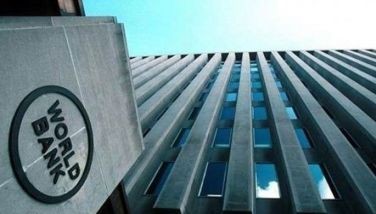Radio telecom dealers question NTC move
July 31, 2005 | 12:00am
The Radio Telecom Dealers Association of the Philippines (RTDAP) is questioning the proposed inclusion by government of certain frequency bands which are currently being used for military, emergency, disaster, safety, commercial, amateur, and industrial use.
The National Telecommunications Commission (NTC) has just issued a draft memorandum circular on frequency band allocations for broadband wireless access.
The group said that the direction of wireless broadband access must be defined to the standards set internationally, based on the road map agreed upon in the International Telecommunications Union (ITU).
It also recommended that the NTC set a specific standard based on an internationally renowned institution on telecoms and should maintain the small allocations for amateur and private networks within the 3.4-3.5Ghz, 5.65-5.85 Ghz and 10.15 -10.65 Ghz.
The group noted that it recognizes access, connectivity and the development of ICT (information and communications technology) skills that becoming important in economies around the world by improving the efficiency, welfare, and creating an equitable and efficient information society.
It said it also recognizes wireless solutions in providing ICT access in developing remote rural and marginalized areas.
Meanwhile, Qualcomm, the primary developer of the code division multiple access (CDMA) technology in mobile phone systems, expressed support to the NTC’s proposal that the 450-470 Mhz band be allocated to broadband wireless access as this would allow CDMA2000 technology to be deployed in this band.
It noted that CDMA network deployments in the 450 Mhz band have been rapidly increasing in many regions of the world.
Qualcomm explained that CDMA450 networks can host a number of compelling applications, including position location services, push-to-talk, mobile instant messaging, public safety applications, infotainment, tele -medicine, multiplayer gaming, mobile commerce, audio/ringtone downloads, mobile video streaming, camera and camcorder applications, asset management and telematics.
"In sum, all of the features and benefits of CDMA2000 technology available in other, higher frequency bands are available to CDMA450 subscribers in the 450 - 470 MHz band," it said.
As of end June 2005, there are approximately two million CDMA450 subscribers worldwide, with commercial networks deployed in 18 countries. This subscriber base is expected to grow at a cumulative annual rate of 20.4 percent.
The company revealed that an additional 27 networks are being deployed or undergoing trials. In the Asia Pacific region, commercial CDMA450 networks have been deployed in Cambodia, China (Tibet), Indonesia, Kyrgystan, Laos, Pakistan, Tajikistan, and Uzbekistan. Vietnam will soon launch a commercial CDMA405 system.
Growth of CDMA450, it said, can be attributed to: growing interest in achieving universal service access goals, solving rural connectivity problems, improving national defense services and national security applications; and NMT450 operators’ desire to migrate their analog 450 MHz operations to digital and their decision to go with CDMA450 technology.
Qualcomm added that due to the favorable propagation characteristics of lower frequency bands and their coverage benefits, the deployment of a wireless system in the 450 MHz band has the potential to offer significant cost advantages to both the network operators and the end user. Fewer base stations are needed to provide coverage to a given geographical area, translating to a lower overall cost to operators.
It is estimated that deployment of CDMA450 costs one tenth the cost of deploying a traditional wired network. Other benefits of CDMA450 include the network ability to provide full mobility, limited mobility and wireless local loop services.
In its position paper, Qualcomm pointed out that while mobile penetration in the Philippines is one of the highest in the Southeast Asian region, Internet penetration is low at approximately two percent at the end of 2003. Enabling CDMA450 operations, it said, will give Filipino consumers more options to connect to the Internet through their wireless device or "mobile PC" and, thus, lead to increased Internet penetration and increased output per capita.
It also said that it agrees with the NTC’s policy of maintaining technology neutrality. "Allocating spectrum for generic services rather than specific technologies provides the flexibility necessary to keep pace with changes in technology or consumer preference. We believe this policy should be upheld in all of the frequency bands the NTC has proposed for allocation," it added.
The National Telecommunications Commission (NTC) has just issued a draft memorandum circular on frequency band allocations for broadband wireless access.
The group said that the direction of wireless broadband access must be defined to the standards set internationally, based on the road map agreed upon in the International Telecommunications Union (ITU).
It also recommended that the NTC set a specific standard based on an internationally renowned institution on telecoms and should maintain the small allocations for amateur and private networks within the 3.4-3.5Ghz, 5.65-5.85 Ghz and 10.15 -10.65 Ghz.
The group noted that it recognizes access, connectivity and the development of ICT (information and communications technology) skills that becoming important in economies around the world by improving the efficiency, welfare, and creating an equitable and efficient information society.
It said it also recognizes wireless solutions in providing ICT access in developing remote rural and marginalized areas.
Meanwhile, Qualcomm, the primary developer of the code division multiple access (CDMA) technology in mobile phone systems, expressed support to the NTC’s proposal that the 450-470 Mhz band be allocated to broadband wireless access as this would allow CDMA2000 technology to be deployed in this band.
It noted that CDMA network deployments in the 450 Mhz band have been rapidly increasing in many regions of the world.
Qualcomm explained that CDMA450 networks can host a number of compelling applications, including position location services, push-to-talk, mobile instant messaging, public safety applications, infotainment, tele -medicine, multiplayer gaming, mobile commerce, audio/ringtone downloads, mobile video streaming, camera and camcorder applications, asset management and telematics.
"In sum, all of the features and benefits of CDMA2000 technology available in other, higher frequency bands are available to CDMA450 subscribers in the 450 - 470 MHz band," it said.
As of end June 2005, there are approximately two million CDMA450 subscribers worldwide, with commercial networks deployed in 18 countries. This subscriber base is expected to grow at a cumulative annual rate of 20.4 percent.
The company revealed that an additional 27 networks are being deployed or undergoing trials. In the Asia Pacific region, commercial CDMA450 networks have been deployed in Cambodia, China (Tibet), Indonesia, Kyrgystan, Laos, Pakistan, Tajikistan, and Uzbekistan. Vietnam will soon launch a commercial CDMA405 system.
Growth of CDMA450, it said, can be attributed to: growing interest in achieving universal service access goals, solving rural connectivity problems, improving national defense services and national security applications; and NMT450 operators’ desire to migrate their analog 450 MHz operations to digital and their decision to go with CDMA450 technology.
Qualcomm added that due to the favorable propagation characteristics of lower frequency bands and their coverage benefits, the deployment of a wireless system in the 450 MHz band has the potential to offer significant cost advantages to both the network operators and the end user. Fewer base stations are needed to provide coverage to a given geographical area, translating to a lower overall cost to operators.
It is estimated that deployment of CDMA450 costs one tenth the cost of deploying a traditional wired network. Other benefits of CDMA450 include the network ability to provide full mobility, limited mobility and wireless local loop services.
In its position paper, Qualcomm pointed out that while mobile penetration in the Philippines is one of the highest in the Southeast Asian region, Internet penetration is low at approximately two percent at the end of 2003. Enabling CDMA450 operations, it said, will give Filipino consumers more options to connect to the Internet through their wireless device or "mobile PC" and, thus, lead to increased Internet penetration and increased output per capita.
It also said that it agrees with the NTC’s policy of maintaining technology neutrality. "Allocating spectrum for generic services rather than specific technologies provides the flexibility necessary to keep pace with changes in technology or consumer preference. We believe this policy should be upheld in all of the frequency bands the NTC has proposed for allocation," it added.
BrandSpace Articles
<
>
- Latest
- Trending
Trending
Latest























